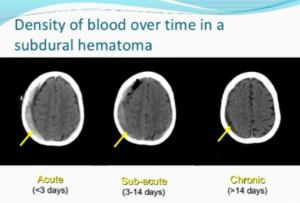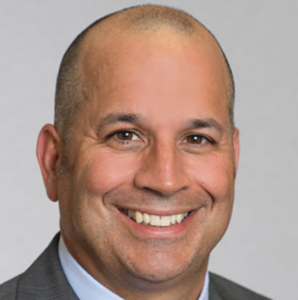
Is there a time of day that symptoms of chronic subdural hematoma typically begin?
You may be wondering if there’s a particular time of day that a person, who’s destined to develop a chronic subdural hematoma, will begin experiencing the neurological symptoms caused by this condition.
A subdural hematoma literally means collection of blood beneath the dura mater of the brain.
In the acute type, the hemorrhaging occurs soon after the blow to the head and is life threatening.
In the chronic type, symptoms from the bleeding (e.g., headache, nausea, change in mental status, weakness) begin occurring three weeks to 90 days out.
Do symptoms of a chronic subdural hematoma usually arise in the morning soon after the patient awakens? Or can they strike at any time?
“The symptoms usually do not depend on sleep-wake cycle,” says John M. Abrahams, MD, chief of neurosurgery at Northern Westchester Hospital, and founder of the Westchester Neuroscience Research Foundation which is studying the genomic profile of malignant brain tumors.
“Rather, they depend on severity and can affect someone all day. If the patient has difficulty walking or standing, symptoms would be worse upright rather than lying or sitting.
“If the patient has a headache, it can be better when lying flat rather than standing upright.”
If the patient has pre-existing medical conditions, it can be difficult to determine when the onset of the cSDH symptoms begin.
For example, the patient may already have some level of mobility impairment from a past accident or stroke.
The mobility symptoms of a cSDH can mimic that of a stroke.
They may also be in the midst of recovering from, say, knee replacement surgery, and are already physically compromised.
Nevertheless, symptoms of chronic subdural hematoma can begin kicking in at any time during the day, night or middle of the night.












